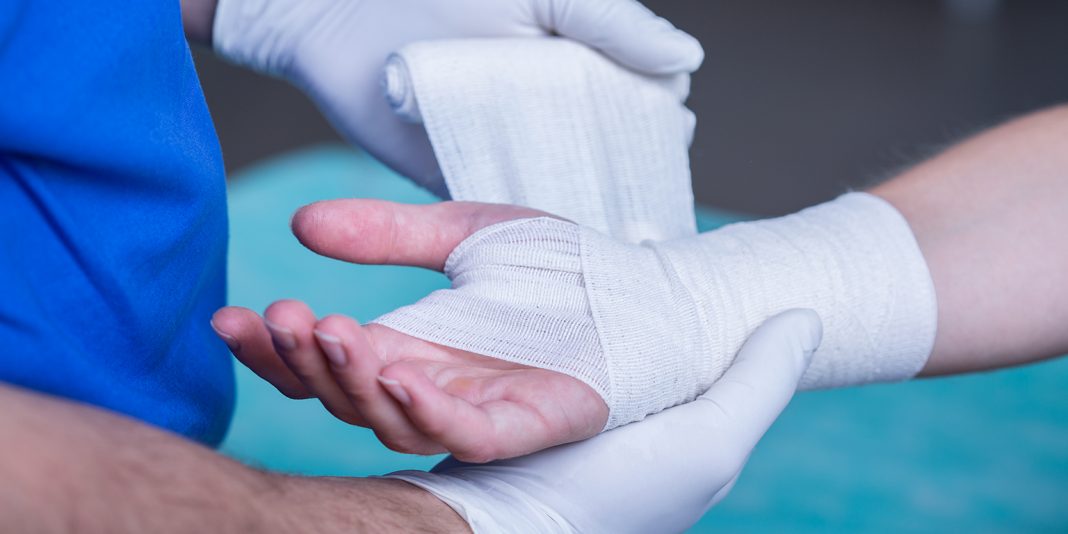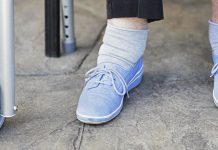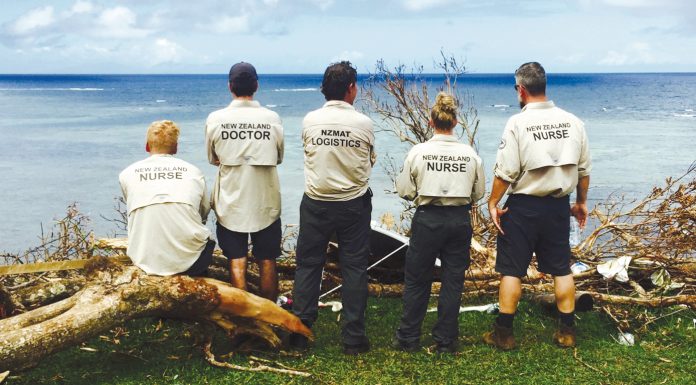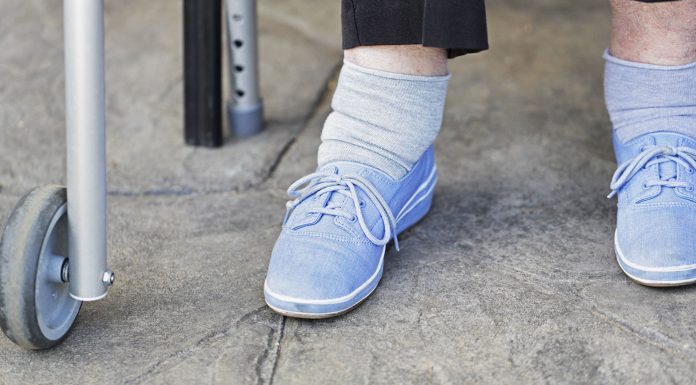LEARNING OBJECTIVES
Reading and reflecting on this article will enable you to:
- Identify the assessment and management principles of hard-to-heal wounds
- Explain how clinical signs in the wounds relate to different bacterial levels within them
- Discuss the principles and reasons for biofilm-based wound care.
Introduction
Hard-to-heal is a term for a wound that fails to heal in an orderly and timely manner1.
Several countries have tried to capture costs and data relating to these wounds but, because most of them are managed in the community, obtaining a countrywide picture is difficult. In New Zealand we have very little idea of the actual size of the problem, although some specific groups have been studied. What we do know is that the cost is expensive in both health dollars and quality of life.
In 2012 a study in the UK found that the overall treatment costs for venous leg ulcers were around $400 million per year, and that was based on the fact that 70,000–190,000 patients have active ulcers at any one time2. An Auckland study identified that slightly less than one in 1,000 people per year will have a leg ulcer, and this is considered an underestimate of the problem3. Dog bites were found to have increased from a rate of 10.5 per 100,000 in 2004 to 14.3 per 100,000 in 20144 and it is estimated that two people per day on average are admitted to hospital as a result, with children over-represented.
It is also estimated that 15 per cent of the 200,000 people diagnosed with type 2 diabetes in New Zealand will develop a foot ulcer at some time and many of these will go on to have an amputation5. For all these groups, the cost to the quality of life needs to be considered as well, such as pain, loss of time at work, potential loss of limb, isolation and lack of mobility.
Factors delaying wound healing
- There are four factors that can delay wound healing. These are:
- patient-related
- wound-related
- clinical competency factors
- resource and treatment-related1.
PATIENT-RELATED FACTORS
It is essential that nurses complete a comprehensive assessment to systematically identify factors that can potentially delay healing. The assessment must involve the patient in their care planning, and be cognisant of the resources the patient has available to them.
The holistic assessment needs to identify all factors impacting on wound healing and determine how these can be best managed – this, in turn, may affect the overall aim of care. (See Box 1 for examples of factors that can delay wound healing.)
The underlying aetiology of the wound needs to be established; for example, whether a leg ulcer is venous or arterial, as a leg ulcer in itself is not a diagnosis. Health professionals managing hard-to-heal wounds need to understand the factors that impact on wound healing and the consequences. If they do not have the skills to provide the appropriate care, they need to refer to the appropriate specialist, who may be a nurse practitioner, nurse specialist or medical professional.
WOUND-RELATED: healing at the cellular level
People used to think that hard-to-heal wounds were just wounds that took longer to heal than acute ones. We now have evidence to prove that there are cellular differences in what is occurring in the wound6.
The main problem is wounds that become stuck in an ongoing inflammatory response, and one of the most common causes is a heavy bacterial load. Ongoing inflammation results in the disruption of the normal activity of a group of enzymes known as matrix metalloproteases (MMPs). In normal healing MMPs have the following functions:
Inflammatory stage: removal of damaged extracellular matrix (ECM) and bacteria
Proliferative stage: degradation of the capillary basement membrane, which is needed for angiogenesis (formation of new blood vessels) to occur and the migration of the epidermal cells
Maturation phase: contraction of the scar and remodelling of the scar ECM7.
When the inflammatory process does not die down, but continues because of bacterial load, the control mechanisms for the MMPs cease to be effective and they continue to destroy the ECM, which is the scaffolding used by cells for movement and communication in the healing process.
Bacterial levels in wounds
A condition known as critical colonisation has been added to the infection continuum for wounds, and while it remains a controversial concept in some circles, many of those who manage hard-to-heal wounds recognise that it exists. Additionally, hard-to-heal wounds have biofilms (which are communities of bacteria and fungi that range from a couple of species to the more common polymicrobial biofilms) and these biofilms are surrounded by a barrier of sugar and proteins that protect the bacteria from external threats, including anti-microbial dressings and systemic antibiotics7.
The knowledge of differing levels of bacteria and the potential for the presence of biofilms in hard-to-heal wounds has led to the concept of biofilm-based wound care (BBWC)10.
What is the relevance of biofilms to wounds?
Biofilms are known to be a major contributory factor in many chronic inflammatory diseases, and it has been shown that biofilm is present on the surface of 60 per cent of hard-to-heal wounds, compared with 6 per cent of acute wounds7. Additionally, it is likely that in all the remaining hard-to-heal wounds at least part of the wound bed is affected by a biofilm7.
Biofilms form when micro-organisms attach to the wound surface, then as they multiply they become more firmly attached and finally secrete a surrounding matrix of sugars and proteins, which create a closed community within a protective barrier. This process can initially be completed in 6–12 hours, at which time they are becoming tolerant to antibiotics and antimicrobials. Within 2–4 days they are fully formed and, if disrupted, they have the capacity to reform as mature biofilms within 24 hours.
The main ways these communities have of resisting treatment are:
preventing antibodies and antimicrobial agents from entering
mutually protecting other bacteria; for example, a bacteria that has developed resistance to an antibiotic can secrete proteins to protect neighbouring bacteria from that antibiotic
hibernating, which is when bacteria become metabolically quiescent. As antibiotics need metabolically active bacteria to work, they are rendered ineffective.
It is worth noting that research shows that the concentration of an antibiotic necessary to kill or eliminate a bacterial biofilm exceeds the maximum recommended prescription levels, so prescribing repeated courses of antibiotics for these wounds is ineffective and also increases the chance of building up further resistance7.
Biofilm-based wound care (BBWC)
BBWC has replaced the original concept of wound bed management, which largely consisted of occasional debridement of a wound, oral antibiotics and the use of antimicrobial dressings. The BBWC approach has been developed as a result of increased knowledge about biofilms and particularly how resistant they are to outside influences and how quickly they can reform.
BBWC is based on:
- serial debridement
- the use of selective biocides
- biofilm suppressants
- selective antimicrobials10
New wound products are appearing on the market all the time and staff should be aware of developments to ensure they keep up with best practice. Antibiotic therapy should be saved for wounds that are clinically infected.
Biofilm disruption
Serial debridement needs to be carried out regularly and in a way that causes damage and disruption to the biofilm before it can reform. Not all antimicrobial products disrupt the biofilm, which is why serial debridement is now recommended. A new, easy way for nurses to achieve this is with Debrisoft, a monofilament pad11. This is said to be less painful than other debridement options and is effective at disrupting the biofilm surface. Debridement is covered in this issue (Vol 15 (5), October 2015) on p.22.
Managing biofilms by bacterial control and high antibiotic use has led to bacterial resistance, resulting in an increasing reliance on topical antimicrobials (antiseptics). Silver, iodine and honey have been used for centuries and other products are now appearing on the market.
Polyhexylmethylbiguanide (PHMB) has been around for about 60 years, with bacteria yet to develop any resistance to it. It is an antiseptic/antimicrobial similar to naturally occurring peptides, which are produced by the majority of living organisms and are effective against many bacteria, viruses and fungi12. It has a low toxicity and has even been used in eye treatments, and relatively recently has made its way into the world of wound management. PHMB works by integrating into the cell membrane of bacteria and reorganising the structure, preventing the spread of bacteria. It is delivered in several different ways – as a solution, a gel, a foam, and in gauze – but a key factor for it to be effective is that it requires 10–15 minutes’ contact with the bacteria to begin to cause disruption. PHMB is commonly used to irrigate the wound and remains in contact with the wound for 10–15 minutes before one of the other products containing PHMB is applied. It is believed to have a surfactant that continues to disrupt the surface of the biofilm, also allowing for the ongoing suppression of bacteria.
CLINICAL COMPETENCY: good care plans are essential
Competency – the ability to do something successfully and efficiently.
Ask many nurses and they will say they feel competent enough to complete a wound assessment. Most areas have wound assessment tools now, and the majority of these are based on the TIME model, that is:
- T for tissue (appearance and type)
- I for signs of infection/inflammation
- M for the amount of moisture
- E for whether epithelialisation is occurring.
After an assessment has been completed, the next part of the process is completing a care plan, and this is where errors demonstrating gaps in competency can begin to creep in.
Mrs H: a hard-to-heal care plan case study
Mrs H was referred with a hard-to-heal wound on her lower leg, which had been present for eight weeks despite three courses of antibiotics and the use of several different wound dressings. The patient was in need of a comprehensive assessment to manage all factors relating to the wound not healing. Purely from the management of the wound bed, the following was noted:
The wound base had approximately 70 per cent slough and 30 per cent granulation; there was no sign of inflammation or infection and the moisture level was low to moderate (a 3 on a 1–5 numerical scale).
This was a critically colonised wound that did not require systemic antibiotics, but it did require debridement and an antimicrobial wound dressing as it had a biofilm present over at least part of the surface.
Mrs H’s initial care plan stated that the aim was to heal the wound. While this may have been the overall aim, this would not have been achieved before managing the wound environment.
What the care plan should have said was:
- Debride slough from wound base
- Disrupt biofilm
- Manage bacterial load
Also state how often and with which products this would be achieved.
Clinical competence is demonstrated by a comprehensive care plan, which includes an assessment that provides the rationale for treatment choices.
Conservative sharp debridement was used, with a honey dressing. To ensure BBWC, the debridement of the wound needs to be repeated. Additionally, a Doppler assessment was completed and compression bandaging applied to reduce the oedema.
Choosing dressings and other competencies
A key clinical competency is also the ability to make a dressing choice based on a wound assessment. It is not uncommon for dressing choices to differ from one nurse to another because of personal preference. This does not demonstrate clinical competence and many patients notice and question it.
The use of honey is often queried by patients. If there is no contraindication and it fits with what the nurse is trying to achieve, there is no reason not to use it; however, the nurse should explain the importance of using medical grade honey.
Other competencies are usually more defined; for example, the ability to complete an ankle brachial pressure index and correctly interpret results; the ability to apply compression bandaging, sharp debridement and topical negative pressure safely and efficiently.
RESOURCE AND TREATMENT-RELATED factors
Health care often opts for the cheapest wound product, which can increase the overall costs as inappropriate care can result in delayed wound healing. For example, a short course of negative pressure wound therapy can substantially reduce the healing period. This leads to improved quality of life and allows the person to return to their normal activities much sooner. Getting people back to work has wider economic benefits for society and reduced ACC costs.
Nurses and managers need to be aware of what is available and the correct way to manage hard-to-heal wounds to maximise patient outcomes while reducing overall costs.
Conclusion
Successfully managing wounds involves identifying all holistic factors that may impact on healing and modifying them where possible; completing an accurate and informed wound assessment; understanding the normal stages of wound healing; and being able to identify what may be happening in a wound as a result of bacterial load and the presence of a biofilm.
With some wounds, the end point may not be healing – for example, some ischaemic wounds or malignant wounds – and in these cases, the priority has to be planning care with the patient to improve quality of life.
For other wounds, we need to start asking why so many end up in the hard-to-heal category. Are all staff who deal with wounds completely up to date with the evidence relating to wound infection and the products available to them and how to use them? Do we have enough nurses with the relevant competencies, including assessing the patient and the wound and recognising all factors that will impact on healing? Does the facility provide the resources for nurses to manage wounds successfully? Could we improve the quality of life for patients with wounds and also reduce the overall health dollar costs?
Hard-to-heal wounds – let’s do better.
Download the learning activity here>>
About the author:
Jenny Phillips RGN BSc (Hons) MN is a nurse practitioner (wound care) working in primary health care and also works as a senior professional clinician at Massey University’s School of Nursing.
This article was peer reviewed by:
Catherine Hammond RN MN, a wound care clinical nurse specialist working for Nurse Maude, Christchurch
Dr Andrew Jull RN PhD, nurse advisor (quality) at Auckland District Health Board and associate professor at The University of Auckland School of Nursing
References
- VOWDEN P (2011). Hard-to-heal wounds made easy. Wounds International 2(4). Retrieved May 2015 www.woundsinternational.com
- MADDOX D (2012). Effects of venous leg ulcers on patients’ quality of life. Nursing Standard 26(38) 42-49
- JULL A & BETTS J (2006). Managing leg ulcers; it’s not rocket science. NZFP 33 (3) 197-201
- OXLEY J & CHENG J (2014). Dog bites, treatment and prevention in New Zealand. NZMJ Vol 127 1406
- GRECH R & DISSANAYAB A. Diabetic Foot Disease webemail.doc –NZSSD. Counties Manakau DHB. www.nzssd.org.nz
- GIBSON D, CULLEN B, LEGERSTEE R, HARDING K & SCHULTZ G (2009). MMPs made easy. Wounds international 1 (1) Retrieved May 2015 www.woundsinternational.com
- PHILLIPS P, WOLCOTT R, FLETCHER J & SCHULTZ G (2010) Biofilms made easy Wounds international 1 (3) Retrieved February 2015 www.woundsinternational.com
- AUSTRALIAN WOUND MANAGEMENT ASSOCIATION (2011) Bacterial impact on wound healing: from contamination to infection. Retrieved May 2015 www.awma.com.au
- Swanson T, Grothier L & Schultz G (2014) Wound infection made easy.www.woundsinternational.com Retrieved June 2015.
- SWANSON T (2011) Innovations in the assessment and diagnosis of wound infection. Wounds international 2 (1) 5-6.
- NICE (2014) NICE guidance supports the use of Debrisoft. NICE med tech guidance (MTG 17) March www.nice.org.uk Retrieved June 2015.
- WOUNDS UK (2010) PHMB and its potential contribution to wound management. Aberdeen




















